by Jerry Petersen
My 1954 Shepherd restoration project is drawing to a close. With a little luck, I hope to have the finished boat at the Rendevous this August. Recapping, I acquired a 1954, 24 foot, hardtop Shepherd named the Swingin Shepherd from a Minnetonka owner in 2000. As far as I know, it is the only 24 foot hardtop still in existence. I used it that summer, and in fact, really enjoyed cruising it with two other couples on the ACBS MAC 2000 pre-annual meeting Michigan lake hop. Since then, it has been under restoration in my home shop. Among my challenges were: the hydraulic shifter which was a dock buster, the transom which was literally falling off, several side planks which had dryrot, many weak frames, and the interior finish. For example, the interior covering boards were badly stained, and most of the mahogany finish was severely blistered..
I have written previous BOATHOUSE articles on my early work on this boat. One of my first tasks was to convert the hydraulic shifter to a manual one using a classic re-chromed GarWood floor shift lever. Turning my attention to the wood, I replaced the layered one inch mahogany transom frames with 2+ inch white oak frames. I think the transom frames were the weakest part of Shepherds as they came from the factory. Using two sistered, unsealed mahogany planks for frames provided an good place for rot to take over. Most surviving Shepherds have had their transoms re-framed.
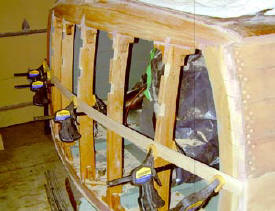 Figure 1 shows the re-framed transom with the first baton fitted.
Figure 1 shows the re-framed transom with the first baton fitted.
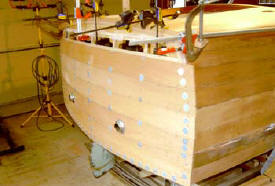 Figure 2 shows my new dry fit transom planks in place with temporary fasteners. Fender washers were used to protect the mahogany planks as they were pulled into the desired curvature. The trickiest part of the transom rebuild was forming the curved mahogany transition piece at the top.
Figure 2 shows my new dry fit transom planks in place with temporary fasteners. Fender washers were used to protect the mahogany planks as they were pulled into the desired curvature. The trickiest part of the transom rebuild was forming the curved mahogany transition piece at the top.
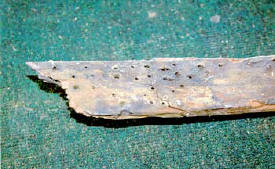 Figure 3 shows a portion of the original piece. I formed the new piece with the appropriate edge bevels, and then steam bent it close to the required arc. It was then fit in place using numerous clamps to pull it into the space between the transom and deck.
Figure 3 shows a portion of the original piece. I formed the new piece with the appropriate edge bevels, and then steam bent it close to the required arc. It was then fit in place using numerous clamps to pull it into the space between the transom and deck.
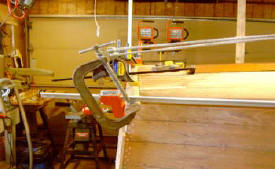 Figure 4 shows the multi-clamping used. I let the 5200 bedding compound cure for a week before taking the clamps off, and even then, I retained fender washers under my temporary fasteners for another week to be sure the 5200 would hold. Finally, I was able to counter sink the fasteners and plane the piece to the desired curvature.
Figure 4 shows the multi-clamping used. I let the 5200 bedding compound cure for a week before taking the clamps off, and even then, I retained fender washers under my temporary fasteners for another week to be sure the 5200 would hold. Finally, I was able to counter sink the fasteners and plane the piece to the desired curvature.
Figure 5 shows the finished product.
Shepherd used 6 mil marine plywood interior covering boards. As I noted in a prior article, my boat must have had replacement boards installed, since I found the ones in the boat when I acquired it were covering original aft glove boxes. I thought, if aft glove boxes were a good idea, front ones would be equally useful. Hence, my new covering boards include cut outs for both. My new boards are made of 6 mil Okumee, with an area of double thickness Okumee epoxy bonded around the glove box openings.
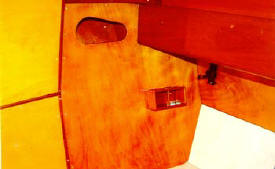 Figure 6 shows the new forward covering board installed. You will notice that I also attached a mahogany stained teak drink holder forward of the glove box opening.
Figure 6 shows the new forward covering board installed. You will notice that I also attached a mahogany stained teak drink holder forward of the glove box opening.
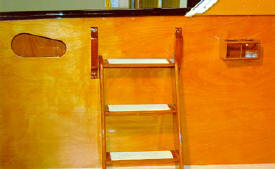 Figure 7 shows the aft covering board with the boarding ladder between the glove box opening and drink holder.
Figure 7 shows the aft covering board with the boarding ladder between the glove box opening and drink holder.
One additional challenge was to find a way to mount a GPS, a forward scanning sonar, and a radio phone near the helm without defacing the dash. My solution was to make a mahogany frame that attaches to the back of the dash to the right of the steering wheel. The frame has a one inch mahogany base with a cut out for cables to reach the back of the instruments. The sonar attaches directly to the base; with the other two instruments mounted on a mahogany bridge over the sonar. There just wasnt room to mount all three instruments horizontally.
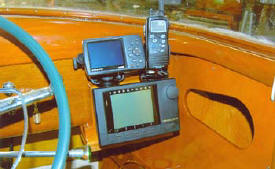 Figure 8 shows the finished product. As a side note, the Shepherd came from the factory with a vacuum tube sonar, and my new unit uses the same through hull mounting location for the sonar transmitter/sensor. Hopefully, my forward (and side) scanning unit will be helpful on river trips. I figure its better to see obstacles before there under the boat! The GPS and sonar are interconnected, so that the latitude and longitude are displayed on both screens.
Figure 8 shows the finished product. As a side note, the Shepherd came from the factory with a vacuum tube sonar, and my new unit uses the same through hull mounting location for the sonar transmitter/sensor. Hopefully, my forward (and side) scanning unit will be helpful on river trips. I figure its better to see obstacles before there under the boat! The GPS and sonar are interconnected, so that the latitude and longitude are displayed on both screens.
When I acquired the boat, it had half inch plywood floor boards with loose carpet. The floor boards are split at the two longitudinal stringers. Both out-board floor sections, and three of the six center floor sections, are permanently screwed to the stringers and to local frames. The three secured center sections must be strongly attached, since seats attach to them. I decided to use three quarter marine plywood for the new floor, and to cover it with heavy duty marbleized linoleum to match the Shepherds original blue-green steering wheel. This led me to have 21 strips of mirror bright stainless steel fabricated to cover all the seams between the floor boards. The three center floor sections that are removable also have lifting rings attached.
 Figure 9 shows this arrangement. You will note in the photo that my masking tape, which I used to mark the screw holes for drilling, was still in place. I was also able to get replica steering column stalk knobs in the proper green color, and my new upholstery completes the green theme. Hence, I hope to be as color coordinated as the factory original.
Figure 9 shows this arrangement. You will note in the photo that my masking tape, which I used to mark the screw holes for drilling, was still in place. I was also able to get replica steering column stalk knobs in the proper green color, and my new upholstery completes the green theme. Hence, I hope to be as color coordinated as the factory original.
With a little luck, Ill be at the Rendezvous. I still have a lot of interior work to complete. I also have to get the bottom painted at a local marina which can support the boat with straps. Please cross your fingers for me. Beyond the Rendezvous, Im signed up for the ACBS pre-annual meeting cruise on the Rideau in September. Im really looking forward to that trip. The enclosed cabin of the Swingin Shepherd should be very comfortable especially in cooler fall weather, come rain or come shine.


